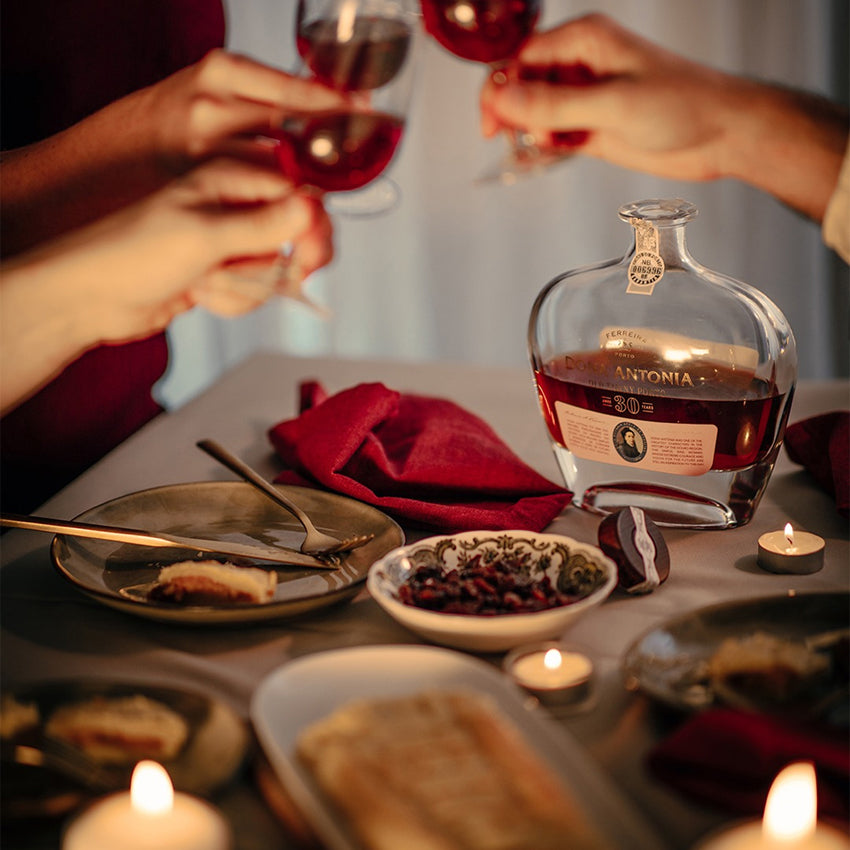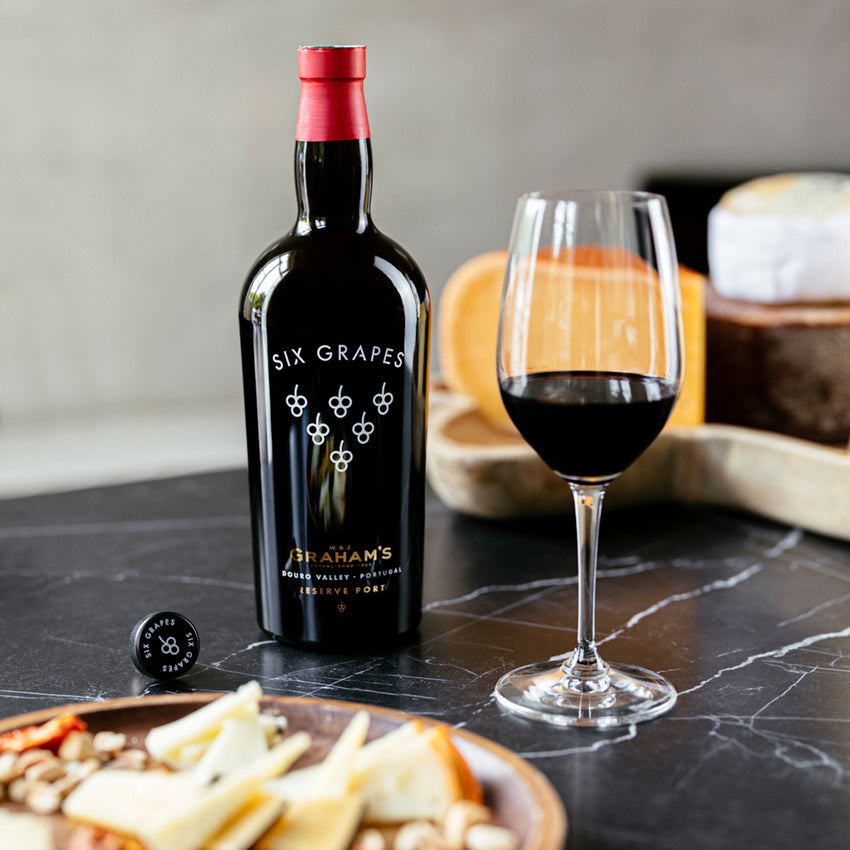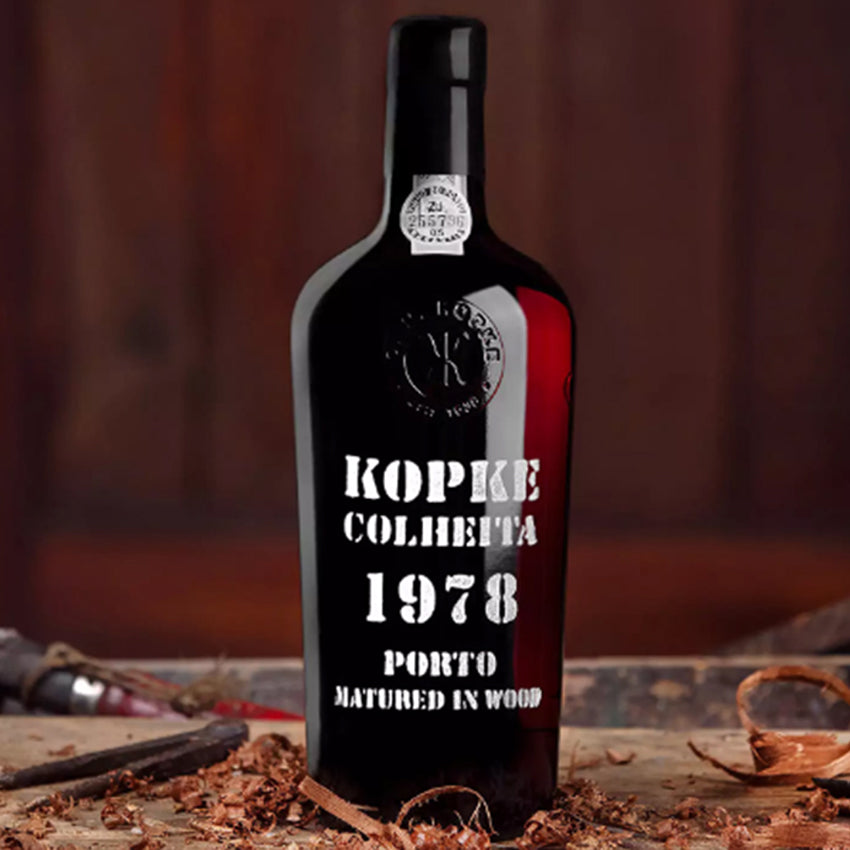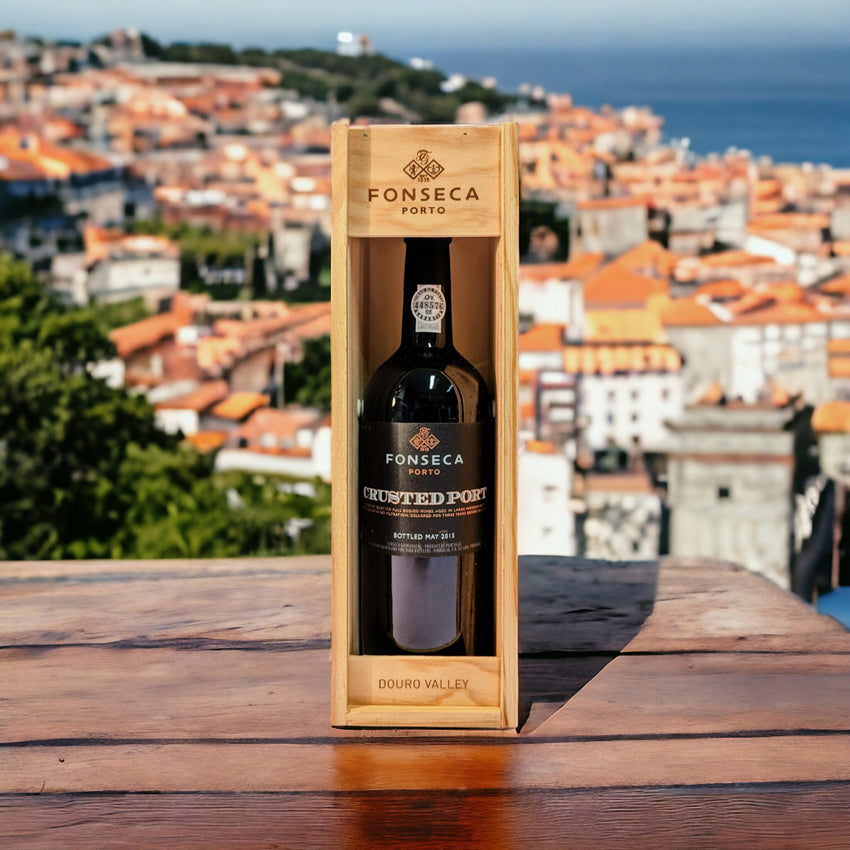Discovering The Rich World Of Port Wine
Port wine, with its rich flavours and long history, offers a wide range of styles to suit every palate. This fortified wine, primarily produced in Portugal’s Douro Valley, can be categorised into several distinct types, each showcasing unique characteristics. While some ports are youthful and fruit-forward, others are aged for decades, developing deep, complex flavours.

Vintage Port
The most prestigious of all port styles, vintage port is only made in exceptional years when the harvest is deemed extraordinary.
- Appearance & Flavour: Deep, intense, and complex, vintage ports have concentrated flavours of dark fruits, liquorice, spices, and earth. They are highly tannic and built for ageing.
- Ageing: Bottled after just 2 years in oak, vintage ports can improve for decades or even centuries in the bottle.
- When To Enjoy: Perfect for special occasions, vintage port is best decanted and served with strong cheeses, rich desserts, or enjoyed on its own.

Single Quinta Vintage Port
Single Quinta vintage ports are produced from grapes harvested at a single vineyard, or "quinta," in good but non-declared vintage years.
- Appearance & Flavour: These ports offer much of the intensity of a full vintage port, with rich dark fruit flavours, but often at a more affordable price.
- Ageing: Like vintage port, they are bottled young and meant for long-term ageing.
- When To Enjoy: These wines are ideal for those who want the luxury of a vintage experience at a more approachable cost.

LBV Port
LBV port offers a taste of vintage port’s complexity but at a more approachable price and without the need for decades of ageing.
- Appearance & Flavour: LBV ports are rich and full-bodied, offering flavours of dark fruits, chocolate, and spices. They have more structure and tannins than ruby ports.
- Ageing: Typically aged for 4 to 6 years in barrels, they are usually ready to drink upon release and do not require further bottle ageing.
- When To Enjoy: LBV port pairs well with strong cheeses, dark chocolate, or rich game dishes.

Tawny Port
Tawny port takes on a tawny, amber colour as it ages in small barrels, developing a nutty, caramelised character.
- Appearance & Flavour: Known for its brownish hue and rich flavours of dried fruits, nuts, caramel, and toffee. Older tawny ports may exhibit more complex notes of honey and spices.
- Ageing: Tawny ports are aged for longer periods, usually 7 years or more, and are often labelled with an age designation (10, 20, 30, or 40 years).
- When To Enjoy: Tawny ports pair beautifully with caramel or nut-based desserts, as well as hard cheeses like Parmigiano-Reggiano.

White Port
White port, made from white grape varieties, is a lighter and refreshing alternative to red ports, with a range of sweetness levels from dry to sweet.
- Appearance & Flavour: White ports range from golden to pale yellow, offering flavours of stone fruits, citrus, honey, and sometimes almonds or floral notes.
- Ageing: Some white ports are aged for a short period to retain their fresh character, while others age longer, developing more complex, oxidative flavours.
- When To Enjoy: White port is perfect as an aperitif or mixed with tonic water for a refreshing summer cocktail. Serve chilled with olives, nuts, or light appetisers.

Ruby Port
Ruby port is the most vibrant and accessible of all port styles, known for its deep red colour and youthful fruit flavours.
- Appearance & Flavour: Ruby ports have intense red and purple hues with flavours of ripe berries, plums, and cherries. They are fruity, fresh, and sweet.
- Ageing: Ruby ports are usually aged for 2 to 3 years in large oak casks to retain their bright, youthful character.
- When To Enjoy: Best served slightly chilled, ruby port pairs well with chocolate desserts or strong cheeses.

Reserve Ruby
Reserve ruby is a more refined version of standard ruby port, made from higher-quality grapes and aged longer.
- Appearance & Flavour: Still fruit-forward, reserve ruby ports have more concentrated flavours of dark fruits and hints of spice.
- Ageing: Aged for up to 5 years, it gains complexity while retaining the bold fruitiness typical of ruby port.
- When To Enjoy: This port is versatile, pairing well with both desserts and strong cheeses.

Colheita Port
Colheita port is a rare and fascinating style of tawny port made from a single vintage year, offering a unique insight into that particular harvest.
- Appearance & Flavour: Colheita ports, like tawny, have a tawny-brown colour and rich, nutty flavours with hints of caramel, figs, and spices. However, because they come from a single vintage, they reflect the specific characteristics of that year.
- Ageing: Colheita ports are aged for at least 7 years in barrels, though many are aged much longer. Unlike other tawny ports, the vintage is listed on the bottle.
- When To Enjoy: A colheita port is perfect for sipping on its own or pairing with desserts like almond tarts, creme brulee, or dried fruits. These wines are a great choice for marking a special occasion tied to the vintage year on the bottle.

Crusted Port
Crusted port is a non-vintage port bottled with natural sediment (crust), offering a vintage port experience but at a more affordable price.
- Appearance & Flavour: Crusted ports are rich and full-bodied with complex flavours of dark berries, chocolate, and spices.
- Ageing: Aged in barrels for about 3 years, they continue to improve in the bottle. They must be decanted to separate the sediment before serving.
- When To Enjoy: Ideal for those looking for a vintage-style wine without the hefty price tag, crusted port pairs well with hearty dishes like stews, roasts, or strong cheeses.

Old & Rare Port
Old and rare port refers to ports that have been aged for exceptionally long periods, often decades or even over a century. These wines are highly collectible and typically released in very limited quantities, representing some of the finest examples of ageing potential in port.
- Appearance & Flavour: These ports have evolved deeply over time, exhibiting incredibly complex flavours of dried fruits, nuts, spices, coffee, toffee, and sometimes even tobacco or leather. They are deeply nuanced, with a silky, mellow finish.
- Ageing: Aged for many decades, these ports undergo profound transformation, with each year adding more layers of complexity.
- When To Enjoy: Reserved for the most special occasions, old and rare ports are best enjoyed slowly, often with fine cigars or rich, matured cheeses. They are true collector's items, making each sip a connection to history.
